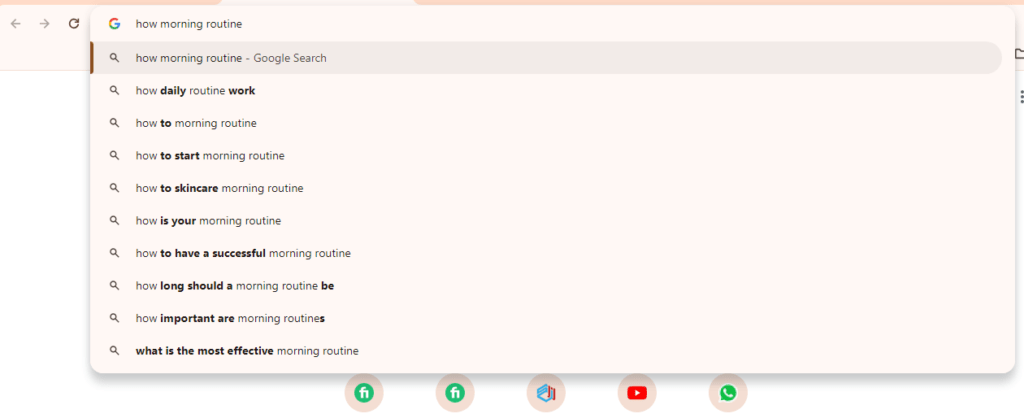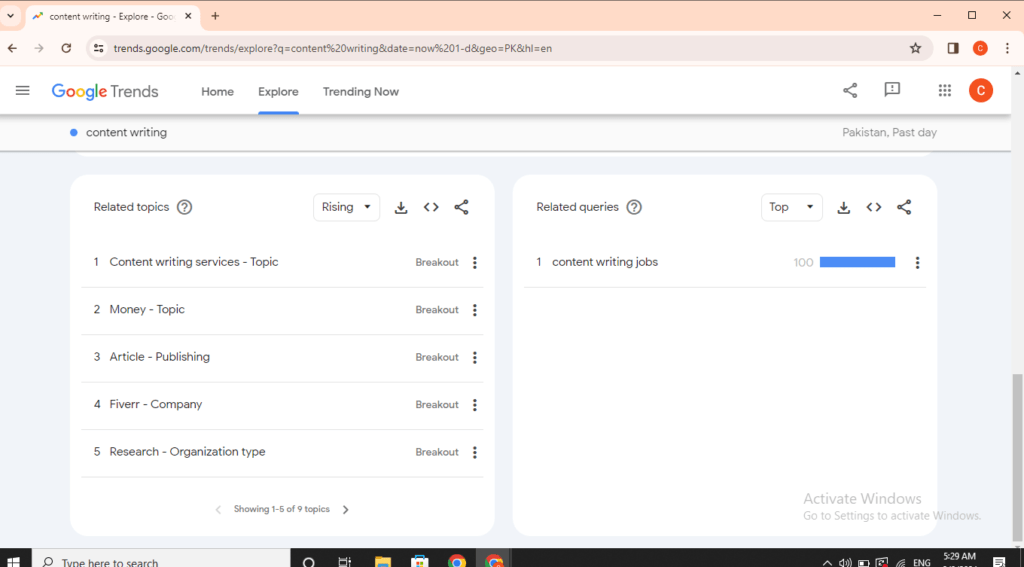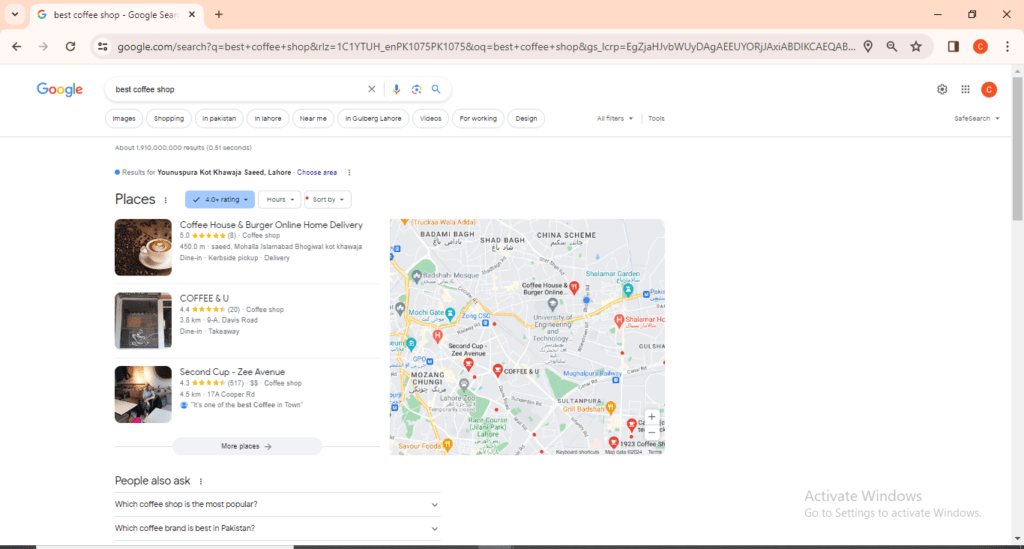SEO Friendly content means content you write with in-depth research keywords that rank highly on search engines like Google. You merely see people click on links that are not on the top or first page of Google. Using the right keywords and valuable content, you can increase the rate of page clicks by 450%.
Here in this, I’ll give a complete guide with some tips and tricks for writing search-engine-optimized content.
Tips for writing SEO friendly content:
- Choose a particular topic
- Search for primary keywords
- Find the secondary keywords
- Write catchy titles
- Search Intent
- Make outline
- Identify your audience
- Write content
- Make your content easy to understandable
- Add internal links
- Must add conclusion
Finding your niche:
It is an additional tip for beginners. Finding your niche is the most important step in writing content. It makes it easy to understand in which field and area you would like to work and are passionate about. Do a lot of research on that particular area and excel in it.
1. Choose a particular topic
Before writing a blog or article, you must have a specific topic on which you can write and provide valuable content to people. The key point in choosing a specific topic is to know about your audience and their interests. If you write a blog on a topic that no one is searching for and is interested in, it doesn’t rank on search engine results and gains traffic, no matter how much valuable information you provide.
The best way to do this is to search on Google for your relevant niche and see what people are likely to search for and what type of content ranks at the top. In reality, it’s all about your audience and their interests. You can also ask your audience what kind of content or information they want.
Make a list of about 5-6 topics write their titles and headlines and rephrase it in your own words.
Do in-depth research. Read other articles and blogs about your topic, gather all the information, and find the gaps between them. Find out what information you can add and what tips and techniques you can use to add value to your blog.
Don’t be a copycat. Instead of copying other people’s work, great writers take inspiration from their competitors and use it to create original content. Additionally, if the content you provide is copied, Google will not rank it.
It actually helps you refine your skills and make you a master of content writing.
2. Search for Primary Keywords:
Primary Keywords are those on which your content is based. You must use such keywords while writing in order for your content to show up at the top of searches. Your content’s overall rating is determined by these keywords. Google uses SEO keywords to better understand and rank your content.
The best way to find the right keywords, which I also use personally before writing my articles and blogs, is to search manually. When you search by typing about your relevant topics, the suggestions show what other people most likely searched for.
Here’s an example: If my topic is “morning routine,” I would begin my research by typing in the topic name or perhaps utilizing “how” or “what” phrases. Google will then provide you with a list of the top keywords relating to my topic that are highly ranked in search engine results pages.

Find which keywords your competitors used for ranking. Its is also another useful way to find focus keywords.
You can also use Google Trends to find trending topics and keywords. When you enter the name of your topic, the higher the topic suggestions and rates, the higher the chances that your content will rank.

Moz Keyword Explorer, Semrush’s Keyword Magic Tool or you can invest in other premium tools for better conducting keyword research.
3. Secondary Keywords:
Secondary keywords play a supporting role in your content. They are actually synonyms of your focus keyword and provide additional information about your topic. As their name shows, they are secondary, so they are not so important from an SEO point of view, but they have some impact on the ranking of your content.
They help Google to better understand your topic coverings and add details to your content
Let’s say your primary keyword is “Coffee” but your list of keywords must have other words.
- Coffee shop near me
- Coffee Lover
- Coffee effects on health
- Beans of coffee
- Coffee before bedtime
These words actually enrich your content and target wider audience.
4. Write Catchy Titles:
Did you know that people have very short attention spans? In fact, you have only 3 seconds to grab their attention; otherwise, they will jump into something else. Make sure the titles (the opening) of your content are engaging and captivating enough to grab attention and make them stick to your content till the end.
You also notice that whenever you go to the store and pick up the fashion magazine, the front page always has some spicy or catchy headline like “7-Days Challenge for Glowing Skin,” which makes people want to read or even buy that magazine.
Try to keep your title short and effective. Use interesting words or emotional objectives like “Why they have to do this?” explain their problems and give them solutions add value to your audience life.
5. Search Intent:
Search intent is actually what kind of data or information people are searching for, whether it is transactional or informational. Let’s say someone searches for “latest Apple watch.” That means they don’t search for it from an informational perspective; rather, they want to buy that watch. So that means the keyword has transactional intent. So it’s important to do complete research on search intent.
Types of Search Intent:
- Transactional Intent: User intention is to perform some specific action. (e.g. “buy iPhone 11”).
- Informational Intent: User want to get information about something. (e.g. “What is moon tides”).
- Commercial Intent: User want to get educate about something before doing an action. (e.g. “best food for cat”).
- Navigational Intent: User tries to find specific website or page. (e.g. ” Google Trends”)
Search intent is also important for search engine optimization. Because Google strives to provide their users with accurate or relevant information in order to enhance their experience. Let’s say your keyword “best coffee shop” has informational intent, but mostly users search for best coffee shops with navigational intent, so Google will never rank your content.

It also helps you decide the length of your content. For example, if you are writing about a product to sell, it should be short and consist of powerful and effective words. But if you are writing about a particular topic that people seek information on, then it should be long enough to provide complete information with credible sources to prove your claims.
6. Make Outline
After choosing a topic and SEO keywords, the very next step for a better understanding of the writing pattern is making outlines. Outlines are the bullet points you make before writing about a particular topic. Developing points helps you organize your data and visualize your content, which is how you are going to connect information until the end of the conclusion. It is actually very helpful for me. Also, whenever I start writing, I create all the outlines (introduction, headings, adding images and links, conclusion), and then it’s all about converting these outlines into paragraphs.
It’s like a time saver for me. A blank page for a writer is always daunting. Creating outlines or even detailed outlines takes away your headache and reduces pressure. I always make outlines, even though my clients don’t require them, but for better understanding and tracking my data, I done with this step first..
The best way to make outlines is:
- Create sections
- Jump into section# 1 (Intro)
- Add subheading H2, H3
- Summarize it (Conclusion)
7. Identify your audience:
Knowing your targeted audience will help you be clear about your level of writing. Imagine what type of audience would find your content interesting or whom you want to read it. For example, if you are writing your thesis about “general medicine” and it will be presented in scientific society, then of course your writing style and format are different; you are not going to define terms in your thesis that your fellows are already familiar with.
Another illustration is that your voice, tone, and manner will differ depending on whether you are speaking to members of the scientific community or primary school pupils. Similarly, it is the same for writing purposes.
8. Write your SEO Content:
Now it is time to collaborate on all previous data or points and start writing. If you are already done with all the research and outlines, then it’s all about converting your bullet points into informative paragraphs.
- Start by writing headlines. Your headlines are the showcase of your data, like what you are going to explain or what your audience would expect.
- Utilize all your SEO keywords (primary or secondary) in the right way. Because they will help Google rank your content.
- Provide some value because Google always ranks content that adds something new and is optimized in a better way to drive organic traffic to your site.
- Always remember that you are writing content for humans, not for search engines. So write high-quality content.
9. Make your content easy to understand:
Make your content easy to skim because most people don’t want to spend too much time just reading; they want a quick idea and move on to something else. So make sure that your content is easy to skim and understand.
Try to make shorter sentences. Shorter sentences are easy to read and simple, so your audience will enjoy reading them.
Make your paragraphs shorter. Don’t overwhelm your audience with giant paragraphs. Each paragraph consists of 3 to 4 sentences, or less than 65 words.
Try to stay on topic. Make sure that every paragraph and sentence at the end connects back to the main topic. Avoid off-topic discussion.
Make clear heading with keywords. Its help your content to rank well and also help audience to get an idea that what are you going to explain.
10. Add Internal links:
A link building strategy is the key step in writing SEO content
Linking your content to an authentic website is the best way to strengthen your content. It shows your audience you have done research and also offers them additional information for a broader view.
Statistics show that it also helps you reduce bounce rates by keeping your readers engaged with your content for a longer time.
11. Conclusion:
The conclusion is about summarizing all your data and presenting it in such a way that all the information or data you want to provide is done. Don’t use the same words or information that you already use in your introduction or outline. Sometimes it is very difficult to write introduction and conclusion paragraphs, but they are worth investing time in.
Remember that the introduction and conclusion are opposite to each other and have unique and creative parts that grab the attention of your audience.
I hope this blog post will help you in your writing journey. By following these tips, your content will surely rank highly in search engines and gain more organic traffic.
